Abstract
Hashimoto, Hajime (Osaka University, Osaka, Japan), and Yukinori Hirota. Gene recombination and segregation of resistance factor R in Escherichia coli. J. Bacteriol. 91:51–62. 1966.—Independent chloramphenicol-sensitive (CMs) mutants of the drug-resistance factor R were isolated. Introduction of two different R factor CMs mutants into a single bacterium, by conjugation or transduction, gave chloramphenicol-resistant (CMr) colonies when such strains were plated on a medium containing chloramphenicol (Cm). These CMr colonies resulted from recombination between two R factors contained within the same cell. Most of the CMr colonies were heterogeneous, and segregation of drug-resistance markers was observed among the progeny. Segregated bacteria which still carried the recombinant R factor were stable for resistance to Cm as well as for other markers of R. All the markers of recombinant R factors were cotransducible with high coincidence and at the same frequency as wild-type R. Sensitive mutants of R which had lost all the resistance markers of the R factor were found also. A mutation of R, referred to as SMA, which was sensitive to streptomycin and sulfanilamide, was capable of reverting to resistance to both of these drugs simultaneously. The sensitive alleles for SMA, CM, and TC were shown to be recessive to the resistance alleles. Mutants of R having multisite mutations or deletions in the CM gene were isolated and used to analyze the pattern of linked segregation of unselected markers of the recombinant R factor. The drug resistance factor R was shown to have two linkage groups, CM—SMA and TC—m.
Full text
PDF
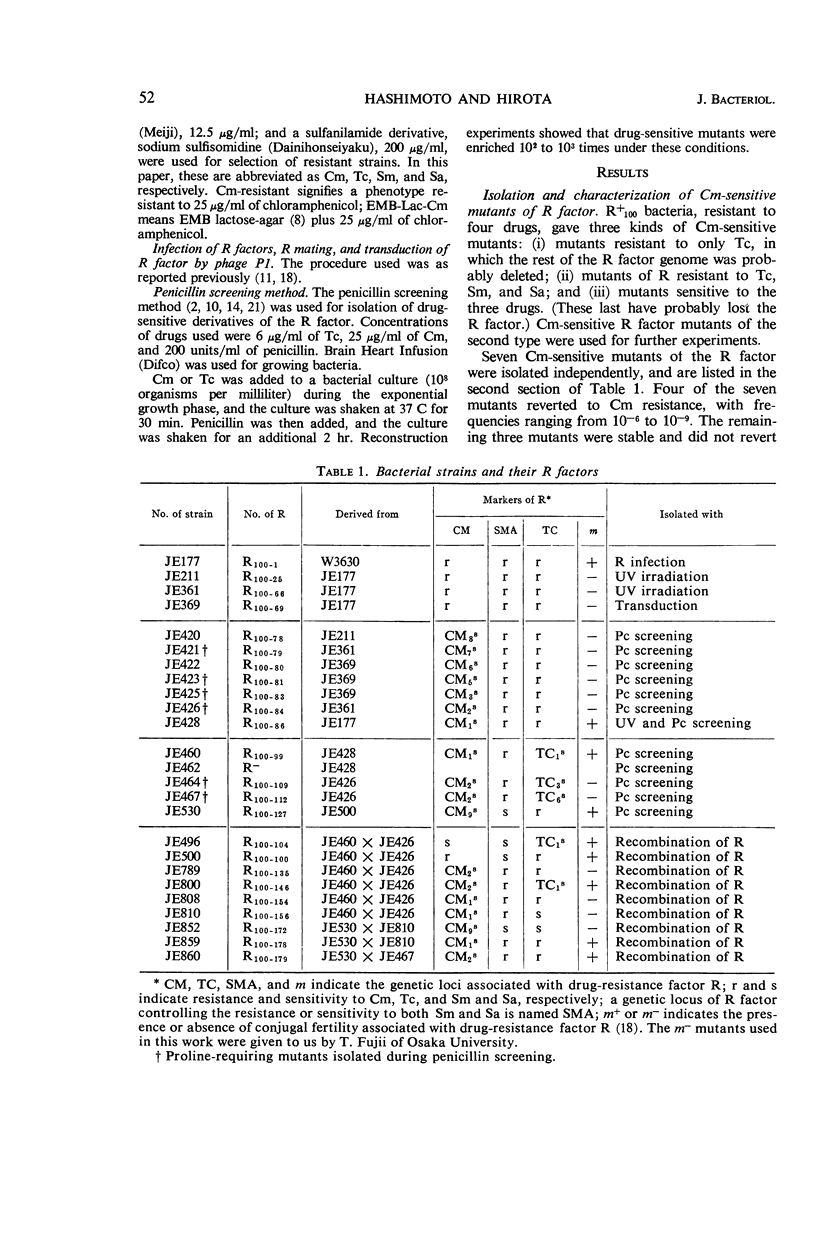
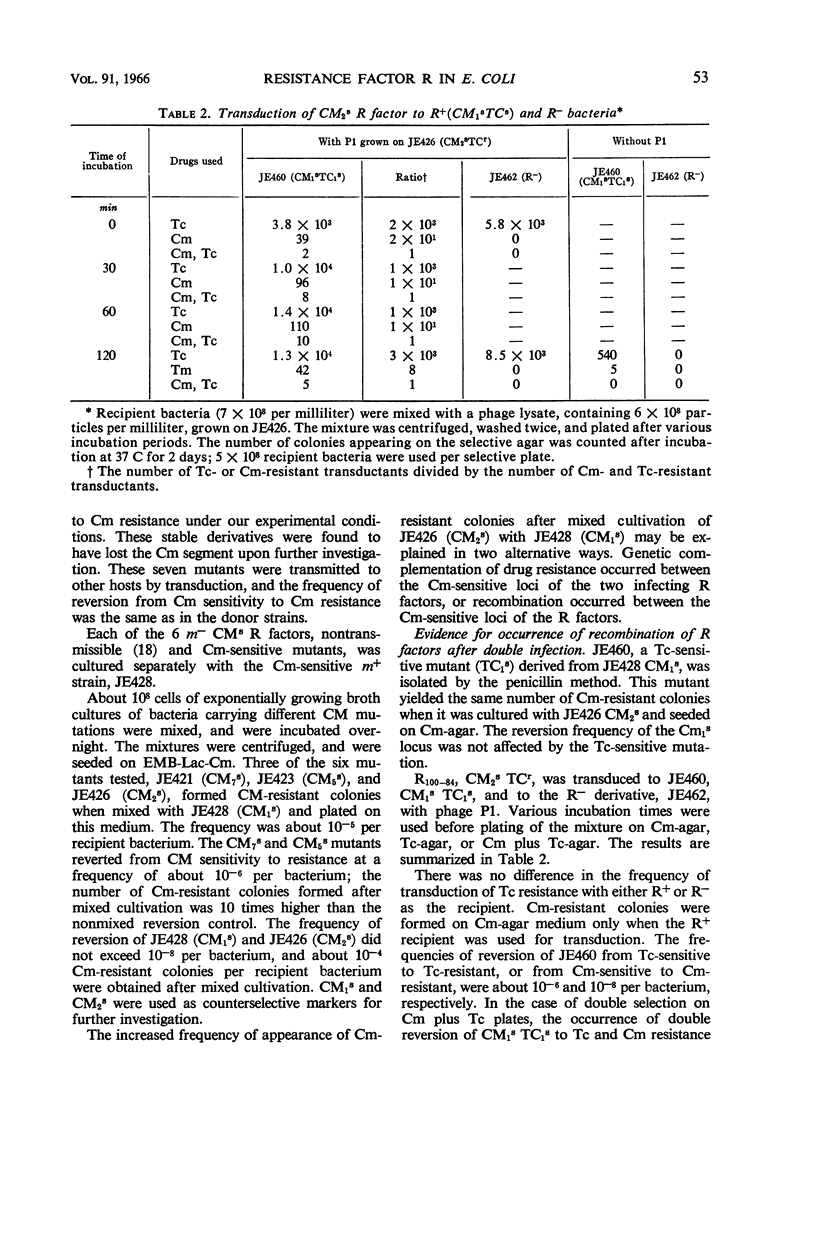
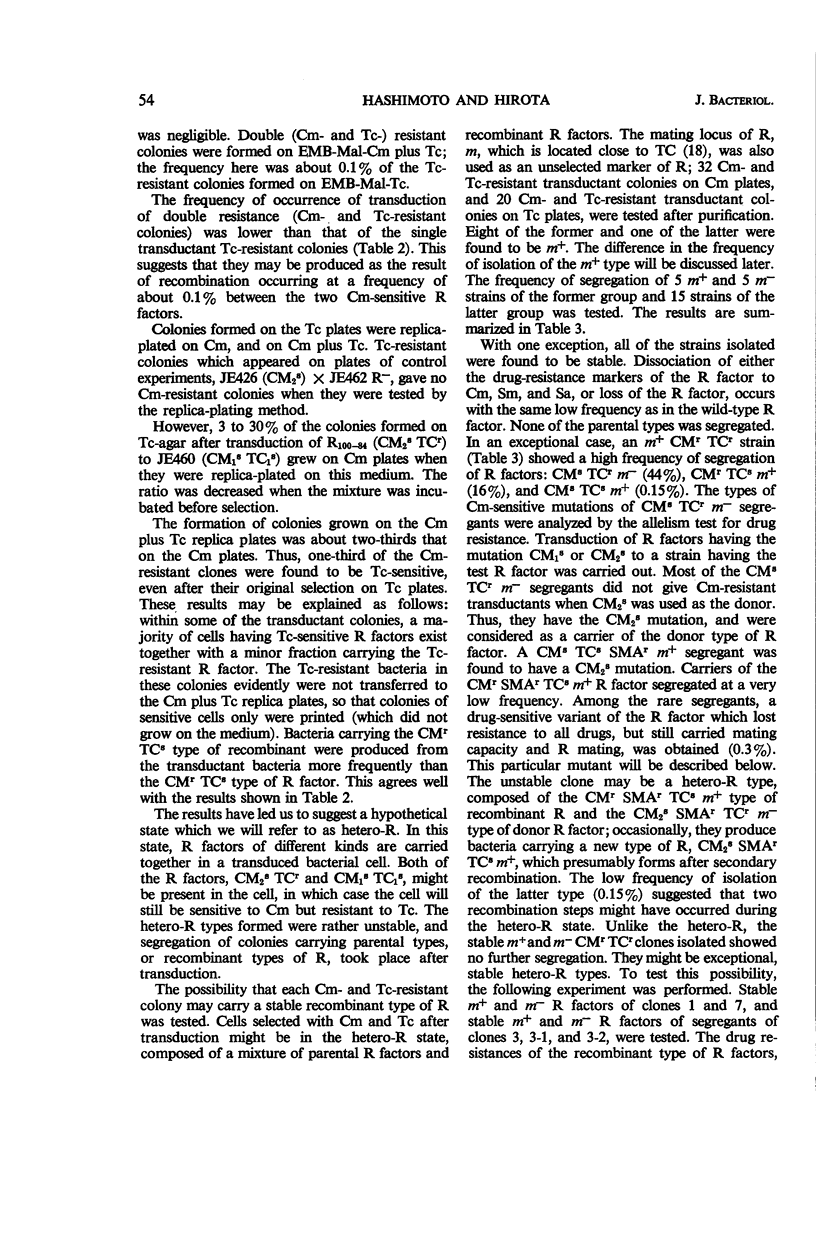
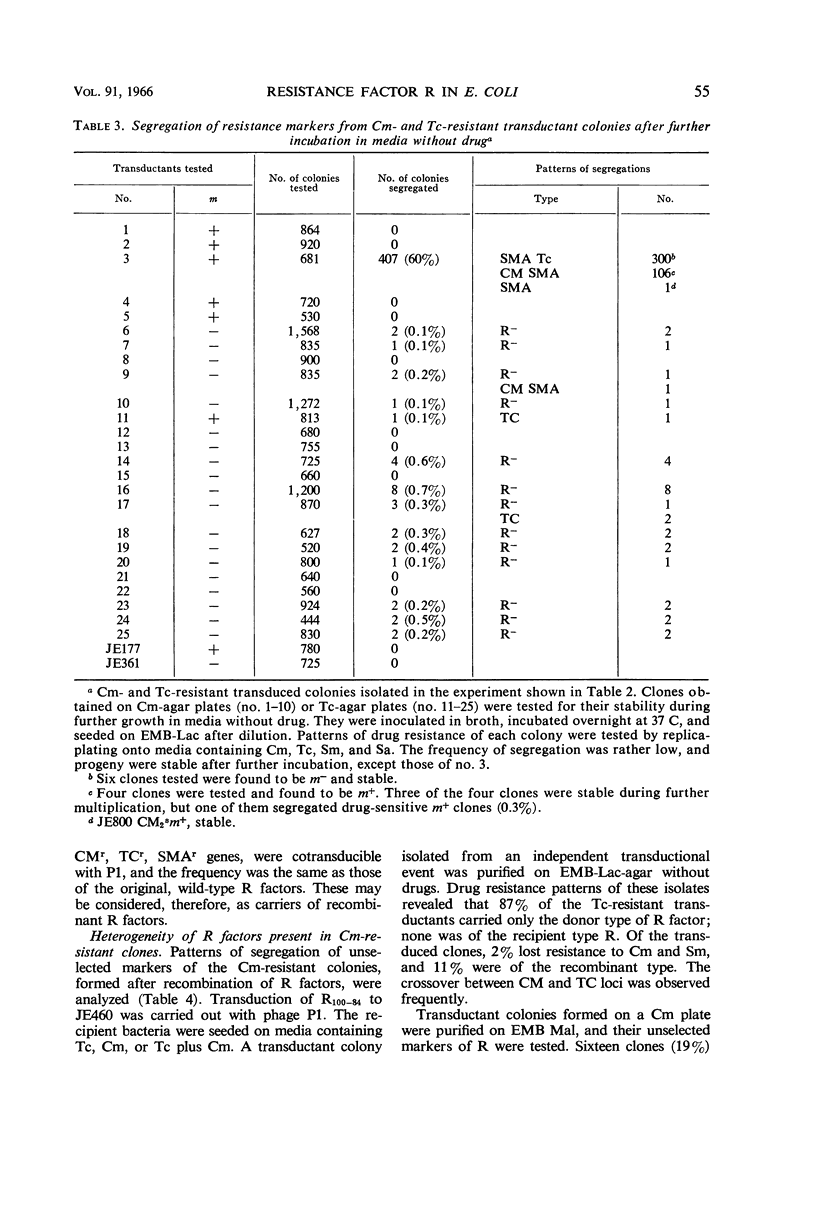
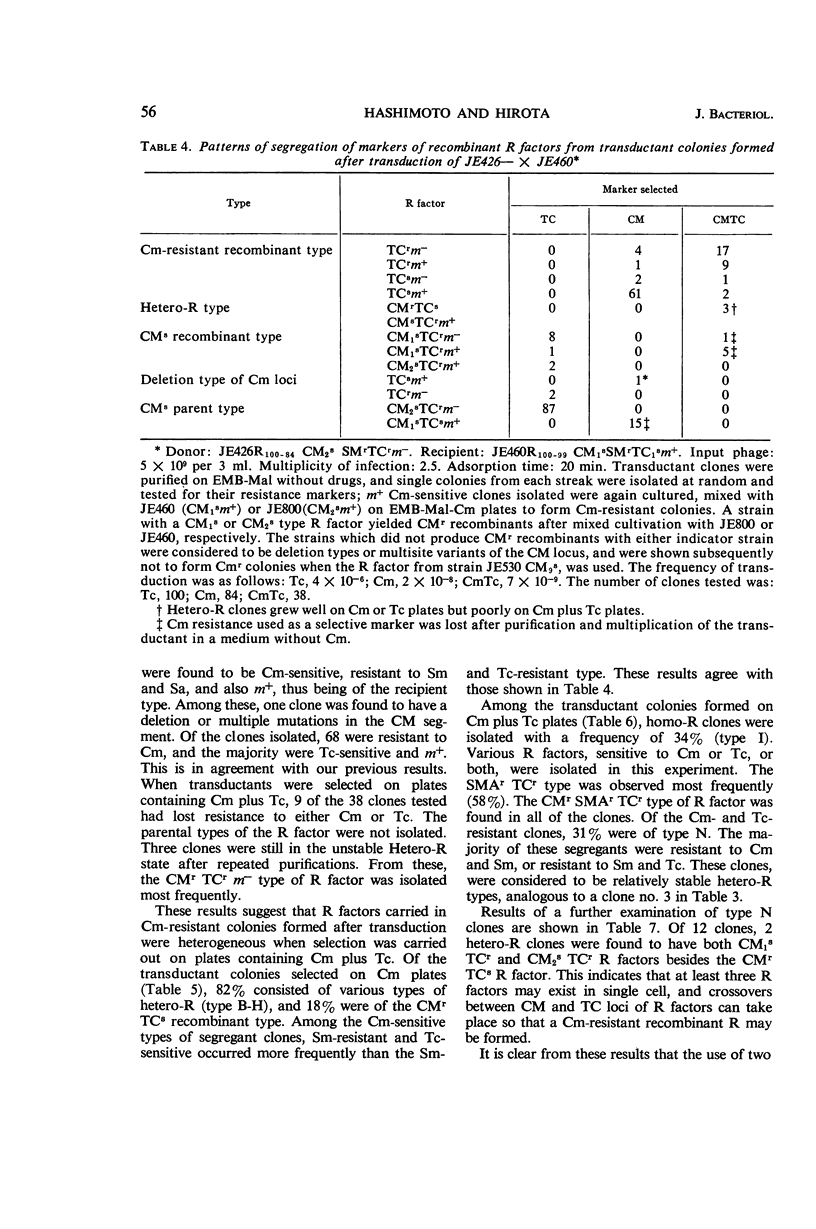
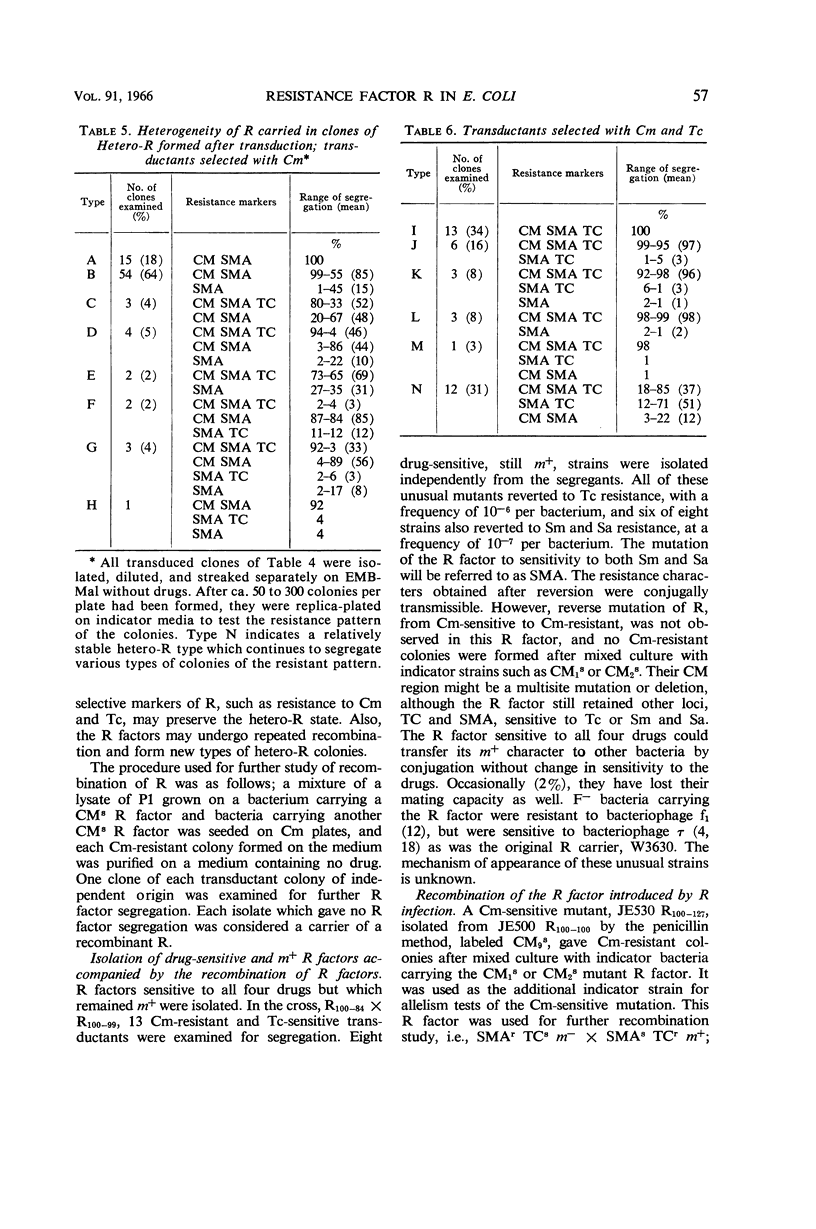
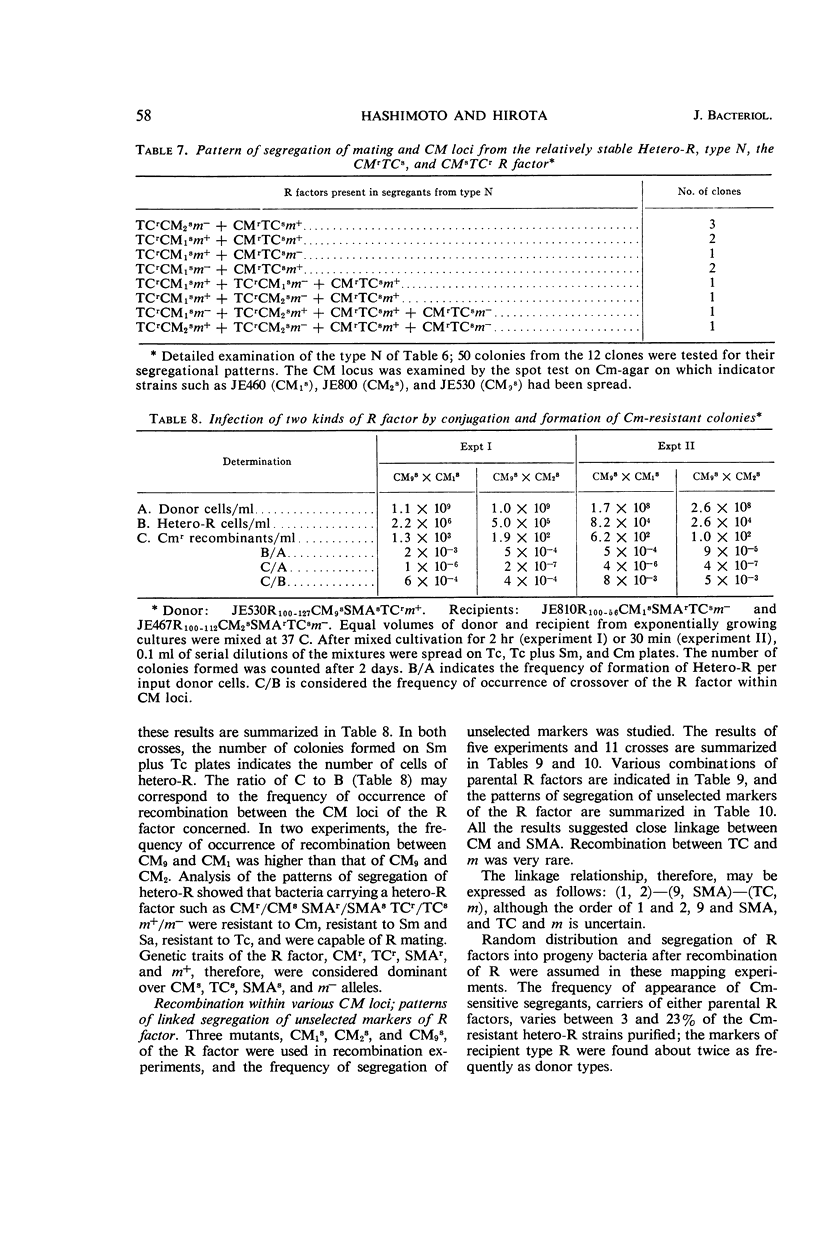
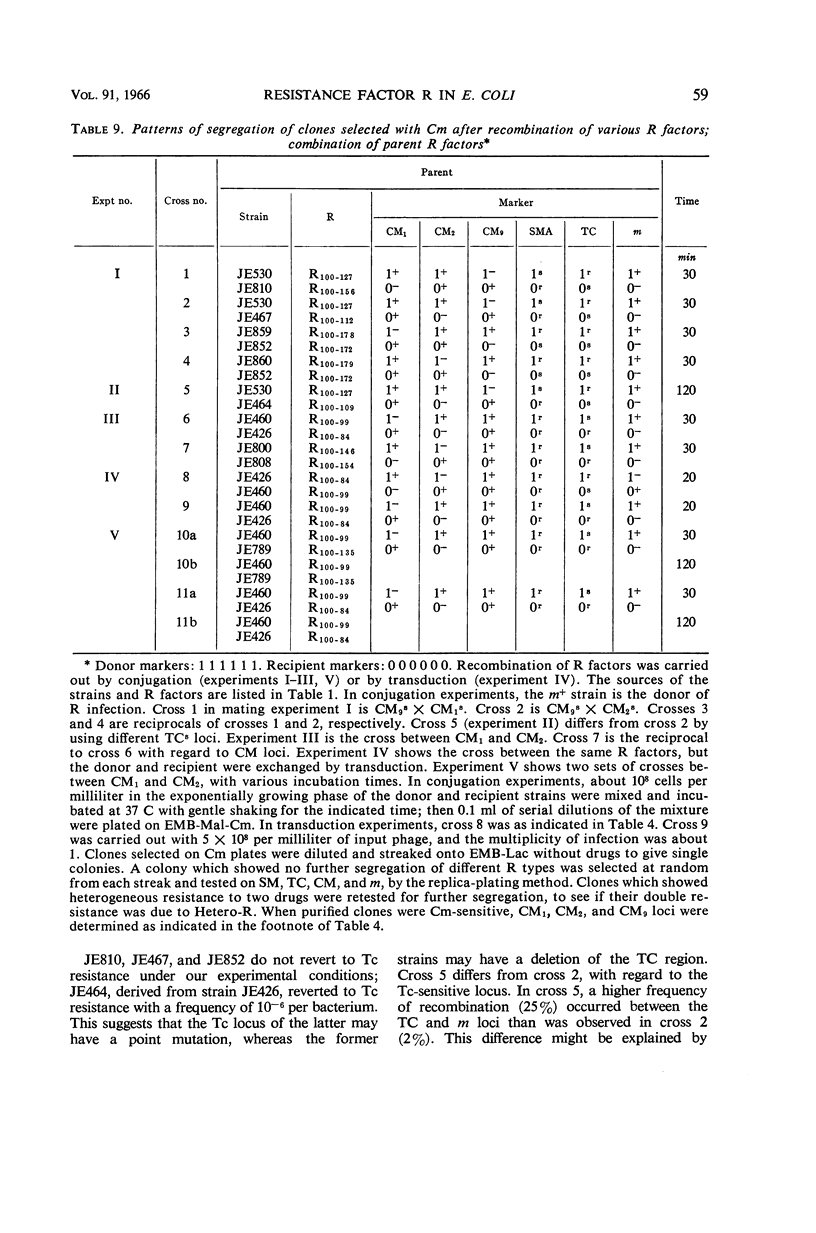
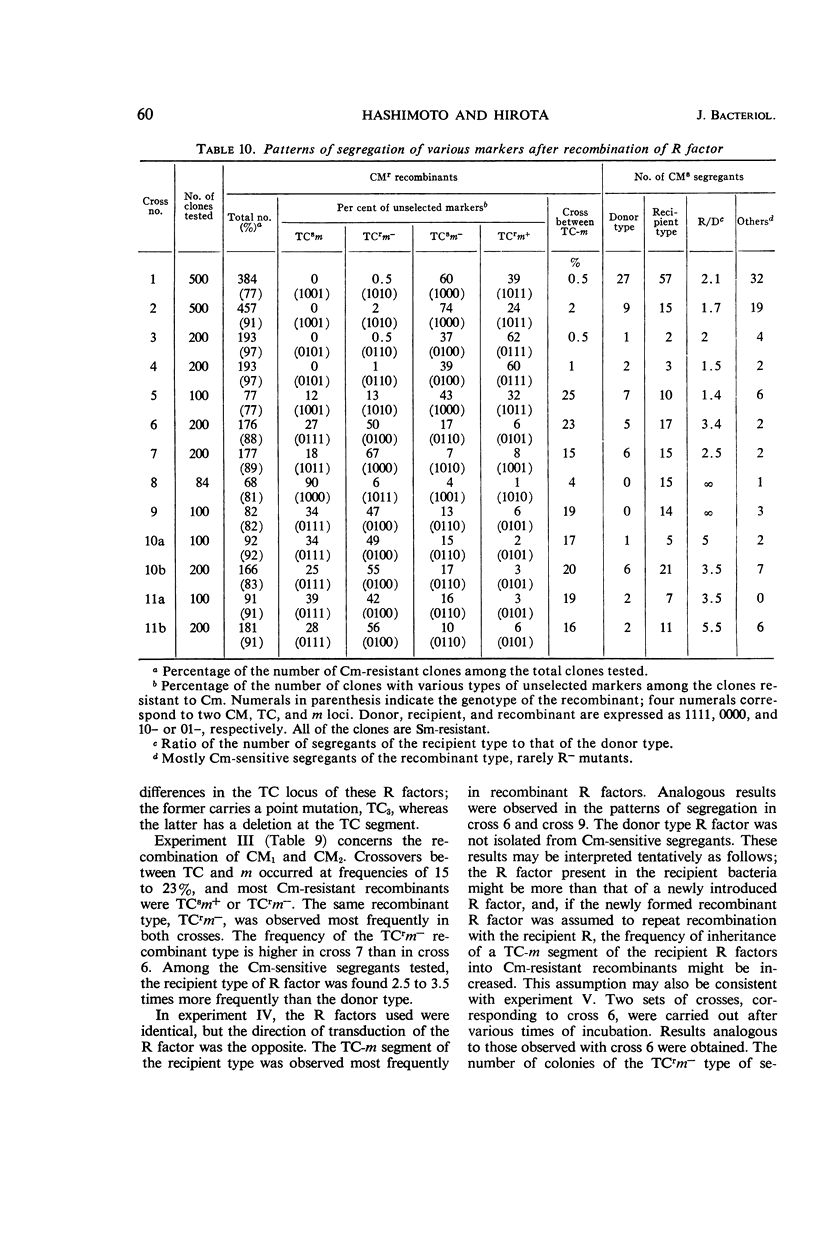
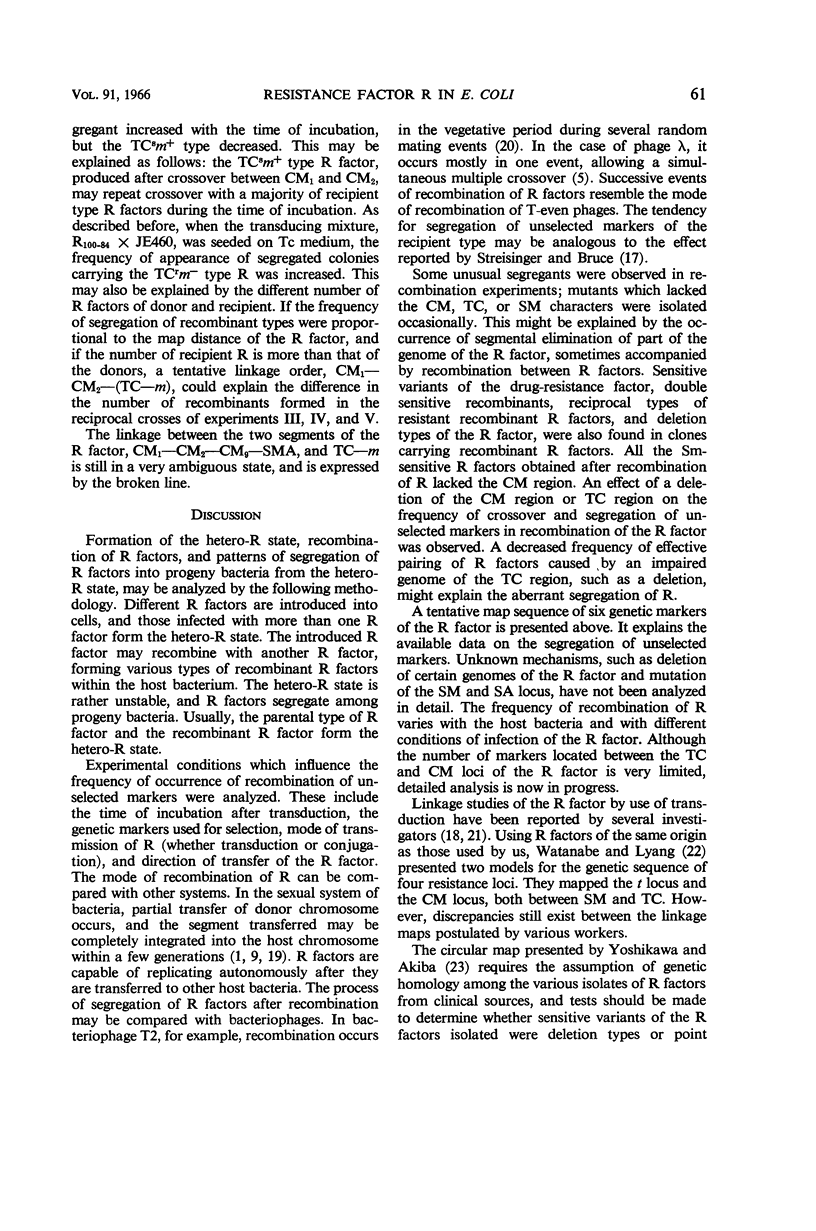
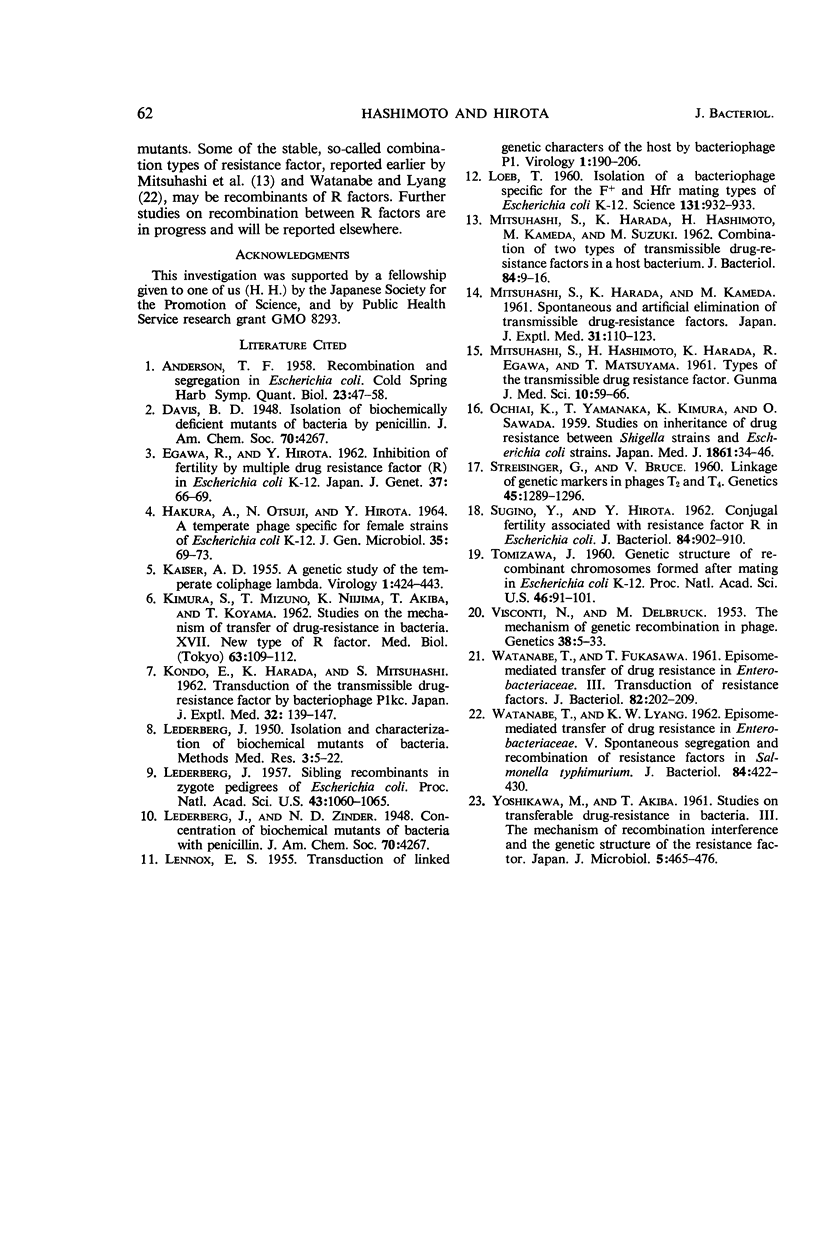
Selected References
These references are in PubMed. This may not be the complete list of references from this article.
- ANDERSON T. F. Recombination and segregation in Escherichia coli. Cold Spring Harb Symp Quant Biol. 1958;23:47–58. doi: 10.1101/sqb.1958.023.01.007. [DOI] [PubMed] [Google Scholar]
- HAKURA A., OTSUJI N., HIROTA Y. A TEMPERATE PHAGE SPECIFIC FOR FEMALE STRAINS OF ESCHERICHIA COLI K 12. J Gen Microbiol. 1964 Apr;35:69–73. doi: 10.1099/00221287-35-1-69. [DOI] [PubMed] [Google Scholar]
- KAISER A. D. A genetic study of the temperate coliphage. Virology. 1955 Nov;1(4):424–443. doi: 10.1016/0042-6822(55)90036-2. [DOI] [PubMed] [Google Scholar]
- KONDO E., HARADA K., MITSUHASHI S. Drug-resistance of enteric bacteria. 12. Transduction of the transmissible drug resistance factor by bacteriophage Plkc. Jpn J Exp Med. 1962 Feb;32:139–147. [PubMed] [Google Scholar]
- LENNOX E. S. Transduction of linked genetic characters of the host by bacteriophage P1. Virology. 1955 Jul;1(2):190–206. doi: 10.1016/0042-6822(55)90016-7. [DOI] [PubMed] [Google Scholar]
- LOEB T. Isolation of a bacteriophage specific for the F plus and Hfr mating types of Escherichia coli K-12. Science. 1960 Mar 25;131(3404):932–933. doi: 10.1126/science.131.3404.932. [DOI] [PubMed] [Google Scholar]
- Lederberg J. SIBLING RECOMBINANTS IN ZYGOTE PEDIGREES OF ESCHERICHIA COLI. Proc Natl Acad Sci U S A. 1957 Dec 15;43(12):1060–1065. doi: 10.1073/pnas.43.12.1060. [DOI] [PMC free article] [PubMed] [Google Scholar]
- MITSUHASHI S., HARADA K., HASHIMOTO H., KAMEDA M., SUZUKI M. Combination of two types of transmissible drug-resistance factors in a host bacterium. J Bacteriol. 1962 Jul;84:9–16. doi: 10.1128/jb.84.1.9-16.1962. [DOI] [PMC free article] [PubMed] [Google Scholar]
- MITSUHASHI S., HARADA K., KAMEDA M. On the drug-resistance of enteric bacteria. 6. Spontaneous and artificial elimination of transmissible drug-resistance factors. Jpn J Exp Med. 1961 Apr;31:119–123. [PubMed] [Google Scholar]
- SUGINO Y., HIROTA Y. Conjugal fertility associated with resistance factor R in Escherichia coli. J Bacteriol. 1962 Nov;84:902–910. doi: 10.1128/jb.84.5.902-910.1962. [DOI] [PMC free article] [PubMed] [Google Scholar]
- Streisinger G, Bruce V. Linkage of Genetic Markers in Phages T2 and T4. Genetics. 1960 Sep;45(9):1289–1296. doi: 10.1093/genetics/45.9.1289. [DOI] [PMC free article] [PubMed] [Google Scholar]
- Tomizawa J. GENETIC STRUCTURE OF RECOMBINANT CHROMOSOMES FORMED AFTER MATING IN ESCHERICHIA COLI K12. Proc Natl Acad Sci U S A. 1960 Jan;46(1):91–101. doi: 10.1073/pnas.46.1.91. [DOI] [PMC free article] [PubMed] [Google Scholar]
- Visconti N, Delbrück M. The Mechanism of Genetic Recombination in Phage. Genetics. 1953 Jan;38(1):5–33. doi: 10.1093/genetics/38.1.5. [DOI] [PMC free article] [PubMed] [Google Scholar]
- WATANABE T., FUKASAWA T. Episome-mediated transfer of drug resistance in Enterobacteriaceae. III. Transduotion of resistance factors. J Bacteriol. 1961 Aug;82:202–209. doi: 10.1128/jb.82.2.202-209.1961. [DOI] [PMC free article] [PubMed] [Google Scholar]
- WATANABE T., LYANG K. W. Episome-mediated transfer of drug resistance in Enterobacteriaceae. V. Spontaneous segregation and recombination of resistance factors in Salmonella typhimurium. J Bacteriol. 1962 Sep;84:422–430. doi: 10.1128/jb.84.3.422-430.1962. [DOI] [PMC free article] [PubMed] [Google Scholar]


